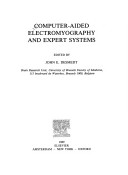Clinical Neurophysiology Updates
1 total work
The second volume in the series Clinical Neurophysiology Updates, this book offers a state-of-the-art account of developments in the practical use of small computers for quantitative electromyography (EMG). EMG now plays an important role in clinical neurological diagnosis and motor control studies in humans, and can confirm or exclude clinical diagnoses, indicate the site and type of an abnormality or expose disorders that are clinically uncertain. The practical value of EMG methods has been enhanced by quantitative measures of the recorded potential, something slow and difficult to achieve manually and which can be more effectively secured by computer data processing. Computer data processing also enables the analysis of potentials under adverse conditions. Computer-aided EMG has become an integral part of the daily activities of EMG laboratories, both for diagnosis in clinical neurology, and for the monitoring and research into revalidation, orthopedic surgery, clinical pharmacology, sports medicine and human physiology. This book reflects the leaps in progress recently made in the field of computer-aided EMG and is an excellent reference book and practical handbook.
